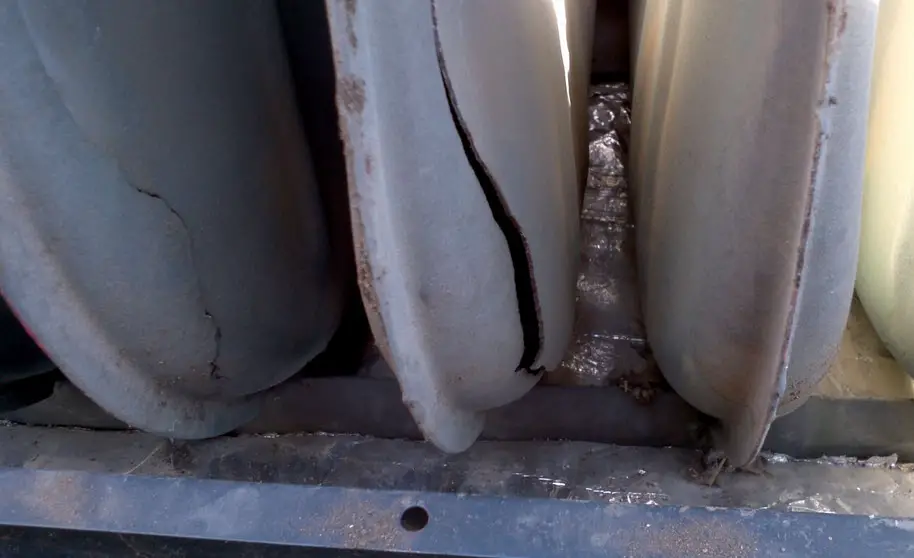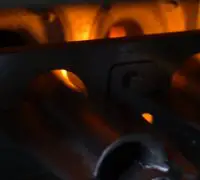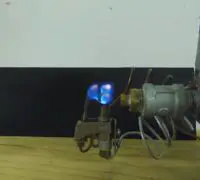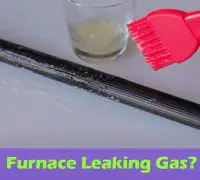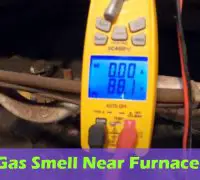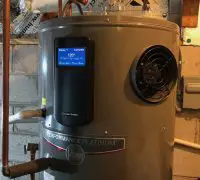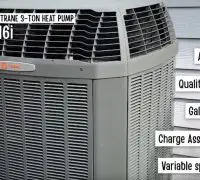Gas furnaces stop and run all the time, so they come with complicated mechanisms and components so that they don’t wear out after a year of use. One of the parts that are crucial for the furnace’s operation is the heat exchanger. A damaged heat exchanger doesn’t just affect the proper operation of the furnace but also poses a risk for your family’s safety, so you should never postpone fixing.
Cracked heat exchanger and carbon monoxide poisoning kill people all the time, so keeping the furnace in good shape is essential.
Page Table of Contents
What’s the role of the heat exchanger?
The heat exchanger will heat the air, but the heating system is comprised of several tubes and coils that consistently loop for heating air running through the system.
The heat exchanger system begins with the burners and ends with the chimney vent. Typically, the heat exchanger comes in a metal chamber for spreading warm air safely throughout the house. After ignition, the furnace will take the hot combustion gases into the heat exchanger chamber, heating the metal walls. At the same time, return air ducts will collect the cold air in the house, taking it to the heating heat exchanger.
After the heat exchanger’s wall heated the air, it will send the hot air throughout the house. Simultaneously, the system will eliminate the combustion gases generated in the heat exchanger outside of your home.
How do you know that the heat exchanger is cracked?
Just by looking at a heat exchanger, you won’t be able to say if it’s cracked or not. However, several signs will tell you that the heat exchanger is cracked. You should scroll down for a detailed explaining.
The furnace flame is yellow
A regular furnace flame is blue. When the furnace generates a steady blue flame, you know for sure that there’s nothing wrong with the heat exchanger. Your furnace may not function properly, but it won’t be because of the heat exchanger.
When the flame is yellow, though, the burner is dirty, or the heat exchanger is cracked. A yellow flame that is also flickering signals that more severe issues happened to the furnace.
The furnace generates a lot of soot
If there’s a lot of carbon inside the furnace, the system will also generate much soot. Typically, it occurs when the furnace cannot burn the gas entirely (incomplete combustion). Several factors could make the fuel not to burn completely, such as faulty burners. However, a cracked heat exchanger could also make the furnace generate more soot than usual.
The system generates an intense odor
When the heating system generates an unpleasant and intense odor, the cracked heat exchanger could cause it. Also, the fumes have formaldehyde and pose a high risk for your body if inhaled.
When the formaldehyde-odor occurs, you will have to call the HVAC professional, as it’s not a problem to solve on your own.
The furnace components are corroded
As time goes by, the furnace’s external components also start to display signs of tear/wear so that the internal components may wear too. The heat exchanger may have cracked in time as well.
Stress cracks on the furnace make a typical issue that develops because the components contract and expand throughout heating and cooling. Also, the furnace components will corrode from moisture and fumes with chloride.
Overheating
The most common cause of heat exchanger cracking is overheating. When the airflow in the system is restricted somehow, heat builds up and makes the system break. Keeping the furnace in good shape and cleaning it for adequate airflow reduces the risk of overheating.
Corrosion/rusting
Rusting or corrosion can also make the heat exchanger crack. Rust will affect metal, so it can even crack the heat exchanger. When you don’t take care of the furnace properly, it’s only a matter of time until rust builds up and breaks the heat exchanger.
Dust buildup
Dirt and dust may also collect in the furnace, clog the blower, block the filters and clog the coils. The clogged elements will block airflow, making the system overheat. In time, the heat exchanger will crack.
Alternate heating and cooling
Constant heating and cooling will also make the heat exchanger crack. With a furnace, the heat exchanger will heat and cool over and over again, so the chamber’s metallic walls will also expand and contract. After some time, the metal element will wear down and, eventually, crack.
Water collecting on the floor around the furnace
When the furnace doesn’t have condensation problems, but you find water under the furnace, a cracked heat exchanger is the no.1 culprit. You should contact the HVAC technician for further investigations.
Ensure that it’s the furnace causing the water on the floor; other appliances could produce the water. A humidifier connected to the furnace could leak, but it can also be the internal drain system of the furnace that is clogged.
Age of the furnace
Heat exchangers are expected to last for 15 years. When the gas furnace is close to that age, the heat exchangers’ chances to crack are relatively high. It’s best that you look for a new heat exchanger, if not for a new furnace altogether.
What should you do if the heat exchanger has cracked?
If you’re suspecting that the heat exchanger has cracked, you shouldn’t try to solve the problem on your own. After paying attention to a cracked heat exchanger’s signs, you should call the HVAC technician for investigations.
You shouldn’t run the furnace if you have already noticed the signs of a cracked heat exchanger; you will increase the risk for health problems, as the toxic gases will leak inside the house. Turn off the furnace until professional help is there.
If repair isn’t possible, you will need to replace the heat exchanger, but only after considering the entire heating system’s age. If you’ve been using the furnace for almost two decades, buying a new furnace makes the better decision.
A new heat exchanger ranges from $600 to $1,200, so it’s not the best investment to make if the furnace is already old. The furnace may still break down, even if the heat exchanger is new. It’s not a decision to make when you don’t know much about furnaces; it’s advised to talk to professionals before placing a brand new heat exchanger into an already outdated furnace.
A final word of advice
If the heat exchanger is cracked, there will be plenty of signs to know for sure. And if it’s broken, it will fail sooner or later too. The risk for carbon monoxide poisoning is relatively high, with a cracked heat exchanger as well. Regularly maintaining the furnace is essential, but some problems will eventually occur, as furnaces have to take intense wear all the time.
